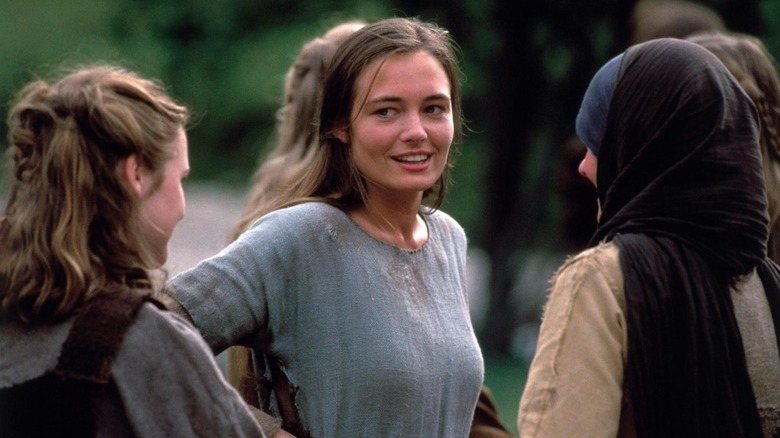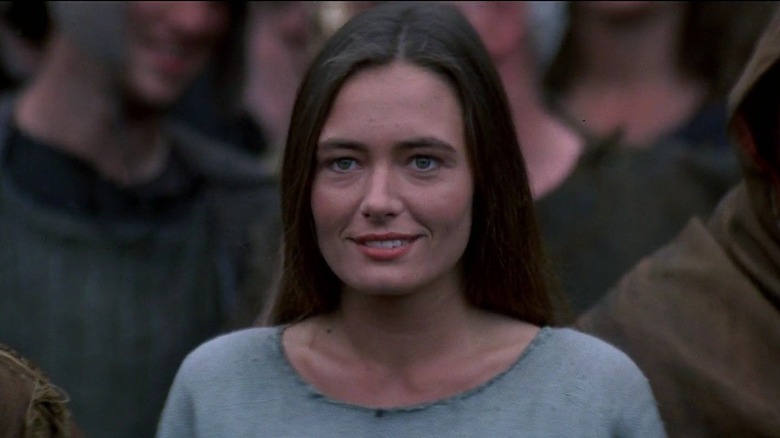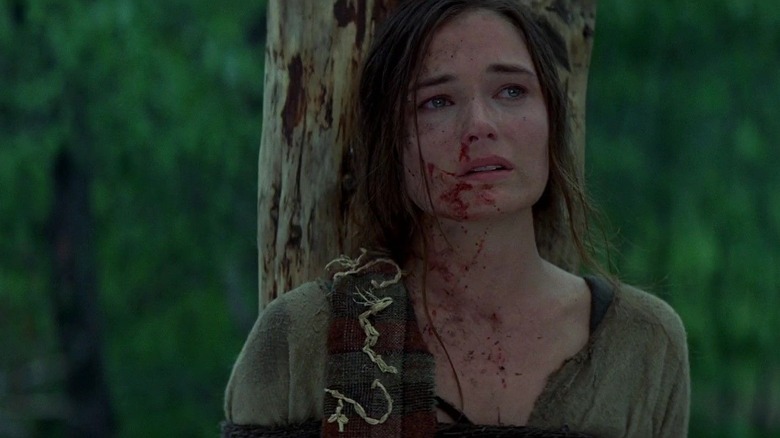Some Of Braveheart's Best Scenes Never Ended Up On Film
Mel Gibson's "Braveheart," a loose biography of the 13th century Scottish revolutionary William Wallace, was released in 1995 to much critical laud, with many critics and fans alike praising its dynamic, bloodied look at Scottish history. Actual historians, meanwhile, had a collective aneurysm over how inaccurate screenwriter Randall Wallace's view of history was. Screenwriter Wallace (no relation to William) took many of his cues from a 1488 poem called "The Wallace," written by Blind Harry. "The Wallace" was already an exaggeration of history, and subsequent poems and tales about William Wallace tended to expand the myth rather than seek accuracy. The inaccuracies and historical fudging committed by "Braveheart" is a matter of public record, and Wallace has said that the Blind Harry poem "spoke to [his] heart" more than it was accurate.
Indeed, the screenplay has more to do with classic Hollywood biopic structure than it does with any kind of classical, 13th-century literary trends. And, like all Hollywood studio fare, "Braveheart" underwent the usual battery of re-writes, edits, drafts, and various levels of studio tinkering. These sorts of changes are common. The final cut of the film, after rounds of streamlining edits and judicious trims, still runs a bulky 178 minutes. In a 2020 interview with Yahoo! News, Wallace called the final edit of "Braveheart" "the most effective cut."
However effective it may have been, Wallace still had a grander narrative in mind and wishes he could have kept a long series of dream sequences that would have included visions of William Wallace's deceased wife, Murron MacClannough, played by Catherina McCormack.
Dreams of Murron
In the story of "Braveheart," Wallace leaves his hometown as a young man to be educated abroad, leaving behind his childhood girlfriend, Murron. When he returns as an adult, William and Murron pick up where they left off, and eventually marry in secrecy. Murron is eventually attacked by English soldiers, and when William fends them off, Murron is kidnapped and executed. Murron's death will inspire William to take up the sword and lead a revolution against the English, an old trope and one that smacks of sexism. It would be in 1994, the year before the release of "Braveheart" that author Gail Simone would coin the term "fridging" as a popular, sexist trope in fiction. In reference to a Green Lantern comic wherein the story's female lead was killed and stuffed in a refrigerator, "fridging" is a trope that kills off a female character merely to give a male character more agency in their own story.
Fridging was an acceptable enough trope at the time to garner Wallace an Academy Award nomination, however. And, indeed, in his vision, the cliché might have been mitigated by the inclusion of Murron in additional scenes. Wallace's original plan was to include Murron throughout the film, appearing to Wallace in dreams to give commentary on his actions. Wallace said:
"I originally wrote three different dream sequences where William is visited by Murron. She dies so early in the story, and I felt that would leave us wanting to feel how the person we love the most keeps coming back to us."
The final dream
Ultimately, director Gibson only wanted to include one dream sequence of Murron, right at the film's end. "Braveheart" ends with William Wallace's execution at the hands of the English. In real life, Wallace was drawn and quartered and hung. In the film, the drawing and quartering are kept intact, but then he is beheaded. Gibson does not shrink away from the violence. Wallace recalls writing the scene and was a little shy about including a decapitation on camera at such a dramatic moment. He figured that Murron could, in a touching, classically weepy moment, return in a vision right at the end. In his words:
"I wept as I wrote that scene. I vividly remember sitting in my office, writing 'The axe falls towards William Wallace's throat.' Then I paused and thought, 'Well, we can't show the ax sever his head. What do I show here? What would he do at the last moment of his life?' So I typed: 'In the last instant of his life, William Wallace turns his eyes for the crowd,' and in that instant, I realized that Murron would be there to tell him, 'I am where you are going.'"
"Braveheart," for all its glorious inaccuracies and larger-than-life theatrics still plays like gangbusters, clichés and all. It's a rousing, violent Hollywood blockbuster, albeit one that necessitates many to tolerate the ousted Gibson in order to sit through. The 178-minute version is just a fine length. One can only speculate as to how a longer, more Murron-centric version would have played.


